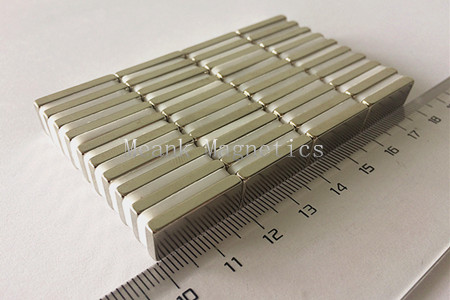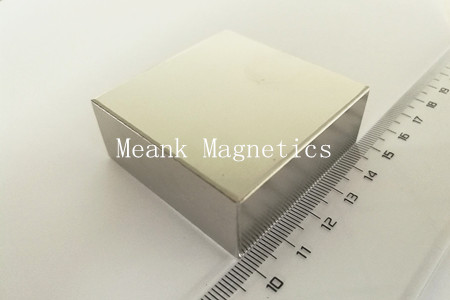The neodymium segment magnets coating is used to protect the neodymium segment magnets. Neodymium easily reacts with oxygen and will oxidize quickly if it is not treated. This is why all neodymium segment magnets are covered with a protective coating, which is very thin and will not have any effect on the adhesion of the magnet. In this article, we will learn about some common types of neodymium segment magnets coatings.
1. Epoxy coating of neodymium segment magnets
Epoxy-coated neodymium segment magnets are cathodic dipping paint coatings. Unlike epoxy varnish technology and NiCu epoxy coating (also known as rubber coated magnet), it has special stability in humid environments and in contact with weak acids and alkali and salt solutions. Due to these characteristics, epoxy resin KTL coated neodymium segment magnets are highly recommended for tidal power plants and offshore wind turbine applications.
In addition, the KTL coating provides significantly better peel performance for the glue peel test. The black epoxy coating consists of 3 layers of nickel, copper and epoxy, exposed as the top layer, which is very suitable for outdoor applications. However, black epoxy is not as wear-resistant as other plants. Under severe conditions, the epoxy layer may be scraped off, exposing the copper layer underneath.
2. Teflon (PTFE) coating of neodymium segment magnets
In terms of cost, Teflon (PTFE) coated neodymium segment magnets cost more (twice that of uncoated magnets), while the total cost is actually reduced by 50%. How could this be? By using PTFE coated magnets, our customers save the cost of frequent replacement of neodymium segment magnets and regular inspection and maintenance of the machine.
3. Electroplating nickel of neodymium segment magnets(NiCuNi)
Nickel electroplating is a widely used coating method for sintered neodymium segment magnets. The coating is applied to the magnet in three layers: a basic nickel layer, a copper layer in the middle, and finally an overlying nickel layer. Considering the rigidity of the surface, cost-effective production, and excellent stability in humid environments and high temperatures, nickel electroplating has advantages.
On the other hand, it is difficult to measure the thickness of the layer. In addition, this method leads to problematic adhesion and magnetic current loss caused by short circuits.
4. Electroplating nickel of neodymium segment magnets (NiCuNi)
It is the most common electroplated coating for neodymium segment magnets. Ni-Cu-Ni is a durable 3-layer (nickel, copper, nickel coating), which is very suitable for indoor use. If rain and moisture proof, they can be used outdoors with good abrasion resistance.
This process is similar to electroplating nickel. Unlike electroplated nickel surface coatings, the final nickel layer is painted chemically. This technology improves corrosion protection under sterile conditions, reduces magnetic flux loss, and enhances adhesion performance.
5. Galvanized nickel tin (NiCuSn) coating of neodymium segment magnets
The cost-effective zinc-nickel-tin plating process is suitable for applications in humid environments that require increased adhesion. The final decrease in the hardness of the tin layer has an adverse effect. It especially aggravates the handling of magnetized items.
6. Galvanized (Zn) coating of neodymium segment magnets
Zinc coating of neodymium segment magnets is a widely used technique. Conventionally, chromate coatings are applied to galvanized parts in special baths. Customers can choose between blue and yellow chromate coatings.
The "yellow" coating rich in Cr+6 is no longer suitable for production in compliance with automotive and ROHS standards, because its manufacturing process is harmful to health. Customers can use a "blue" (sometimes called "white") chromate coating. Compared with the characteristics of the "yellow" coating, this coating provides lower corrosion protection.
On the other hand, it excludes damage to human health and damage to the environment. Due to its mechanical stability, zinc coatings can only be recommended for temperatures up to 80°C. Simple identification of coating thickness and good handling make this technology very attractive. This process is most suitable for galvanizing carrier materials.




